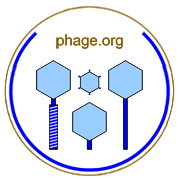

The conversion of a lysogenic infection into a productive infection.
Induction often is stimulated by damage to bacterial DNA and in the case of prophages that are integrated into the bacterial chromosome, induction also involves excision of the prophage from the chromosome. Note that induction is short for "prophage induction" and that prophage induction can also be described as a genetic switch (as in switch in genetic state from a lysognic cycle to a lytic cycle, i.e., productive infection).
In bacteriophage lambda (λ) induction is associated with cleavage of the CI repressor. The result is production of the protein, Cro, which inhibits further production of CI. Induction in λ as well as with numerous other lysogens typically is in response DNA damage within the host bacterium. Induction that occurs in the absence of specific inducing agents can be described as spontaneous, as in "spontaneous induction" or "spontaneous switching".
Temperate phage life cycles involve multiple, often conflicting steps with the induction step being one that transitions the phage from a state in which their success is intimately tied to that of their bacterial host, over longer time frames, to a state in which they function instead explicitly as antibacerial antagonists. This is the definition from Adams (1959, InterScience, p. 440): "The transition from the prophage to the vegetative state in lysogenic bacteria, occurring spontaneously or after experimental application of inducing agents."
References:
Little, J. W. (2005). Lysogeny, prophage induction, and lysogenic conversion. In: Phages: Their Role in Bacterial Pathogenesis and Biotechnology. Waldor, M. K., Friedman, D. I., and Adhya, S. L. (eds), ASM Press, Washington, DC, pp. 37-65.
For more on this topic, see Wikipedia, Google, and PubMed. Contact web master. Return to terms.











